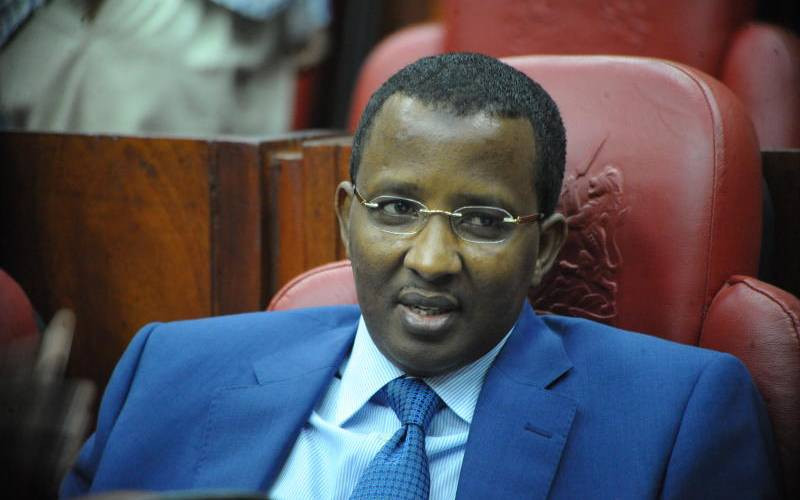The Ministry of Education requires over Sh28 billion to absorb all candidates who qualified for certificate, diploma and degree courses this year.
The Sunday Standard has established that the increased number of students who scored the minimum university entry grade of C+ and above has posed a huge financial implication that would require additional funds.
It emerged that some Sh7.5 billion more would be required to cater for the increased numbers, pushing the total budget to Sh17.5 billion for degree programmes alone.
This will be the financial implication if each degree students receives about Sh140,000 per academic year to facilitate learning. The details emerged during a meeting last week between Kenya Universities and Colleges Central Placement Service (KUCCPS) board and Education Cabinet Secretary George Magoha.
The meeting is a routine briefing held ahead of courses revision and final call for placements.
However, sources indicated that the ministry is also weighing two other options which may either reduce the amount per student or a reduced intake lot.
Last year, some Sh10 billion was spent to take in about 89,486 students to universities.
Qualified students
Insiders said if the ministry does not increase the money to cater for all the qualified students, the average amount to be allocated per student would be reduced.
Alternatively, if the standard amount allocated per student is maintained with last year’s total allocation, then the number of qualified students to be taken into degree programmes may be reduced, thus locking out some students.
It also emerged that to cater for the 350,000 students who qualified to join certificate and diploma courses, the government will require Sh10.5 billion.
The figure is arrived at by computing the amount sent to colleges per student by the total number of students who qualified for the certificate and diploma courses. The government sends capitation of Sh30,000 to all TVET students annually.
The Higher Education Loans Board (Helb) sends each student Sh26,000 and another Sh14,000 pocket money for upkeep. For university students, the Helb figure was revised from at least Sh43,000 to about Sh68,000.
The developments mean that the future of the thousands of last year’s candidates now lies on the decision that will be made by the Ministry of Education on placement of the students.
Also being debated is whether the government should continue to sponsor students in private universities, with grumblings noted from various quarters.
Stay informed. Subscribe to our newsletter
Private universities have maintained that the presidential directive cannot be overturned by anyone.
President Uhuru Kenyatta made the decision in 2017 at a State House meeting with vice chancellors and council chairpersons of both public and private varsities.
The decision has seen some 10,000 students sent to the private institutions annually in a move Uhuru said will provide a chance for more students to pursue courses of their choice. Universities have however upped their game to attract more students and plug the budgetary deficits occasioned by a recent trend of declining students’ numbers.
Already, some academic programmes in public universities were facing a serious shake up, with staff job cuts looming as reports indicate that half of the courses declared by the institutions in recent years attracted less than 10 students.
In some universities, a number of courses are already being taught out as reality dawned that some lecture halls may not be reasonably constituted to warrant expenditure of public resources.
However, with the rise in numbers this year to about 125,000, universities are under extreme pressure to mount competitive strategies to attract the most number of students.
Already, the universities have declared huge capacities in anticipation of corresponding allocations of students.
If last year’s capacities declared by the universities stands, Kisii University would scoop the most number of students as it declared a total capacity of 6,860.
Maseno University would get the second highest allocation having declared capacity of 6,765. Jomo Kenyatta University of Science and Technology (JKUAT) would get the third highest allocation with 6,326.
University of Nairobi would get the fourth highest allocation as it declared capacity of 6,227.
Kenyatta University ranks fifth in highest declared capacities of 5, 638. Moi University closes the top six institutions with high capacity as it declared 4,968.
Other universities with high capacities are Chuka University with 4, 800, Pwani University with 3, 880, Egerton University with 3, 759, Masinde Muliro University of Science and Technology with 3, 640, Kirinyaga University withy 3, 600 and University of Eldoret 3, 275. However, final allocations of students to these institutions will be pegged on vetted programmes by the Commission for University Education (CUE).
Middle level colleges
But even as the ministry makes arrangements and plans to absorb students to various programmes, a plea has been made to parents to encourage their children to take up slots in middle level colleges.
Principal Secretary in the State Department of Vocational and Technical Education Kevit Desai said there are serious career opportunities in TVET institutions and pleaded with students and parents to explore them.
“Everyone thinks that university education is ultimate success and that if you do not join one, you area failure. There are rewarding opportunities in middle level colleges that may result in degree qualifications later in life,” said Dr Desai.
Presently, candidates who score grade C– and above are qualified to pursue diploma programmes.
Those with D plain and above can take up craft certificates courses as those who attained D– minus and E can pursue Artisan certificate courses.
“These students have not failed. They only scored few marks in academically based on various reasons such as environment, resources allocations but they have talents,” said Dr Desai.
He said the government has invested heavily in middle level training and noted that students must be sensitised to know that there are alternative pathways to success.
 The Standard Group Plc is a
multi-media organization with investments in media platforms spanning newspaper
print operations, television, radio broadcasting, digital and online services. The
Standard Group is recognized as a leading multi-media house in Kenya with a key
influence in matters of national and international interest.
The Standard Group Plc is a
multi-media organization with investments in media platforms spanning newspaper
print operations, television, radio broadcasting, digital and online services. The
Standard Group is recognized as a leading multi-media house in Kenya with a key
influence in matters of national and international interest.
 The Standard Group Plc is a
multi-media organization with investments in media platforms spanning newspaper
print operations, television, radio broadcasting, digital and online services. The
Standard Group is recognized as a leading multi-media house in Kenya with a key
influence in matters of national and international interest.
The Standard Group Plc is a
multi-media organization with investments in media platforms spanning newspaper
print operations, television, radio broadcasting, digital and online services. The
Standard Group is recognized as a leading multi-media house in Kenya with a key
influence in matters of national and international interest.








